First, Rock & Roll was neither “new,” nor indeed even a single musical style;
Second, the Rock & Roll era does not mark the first time that music was written specifically to appeal to young people;
Third, Rock & Roll was certainly not the first American music to fuse black and white popular styles.
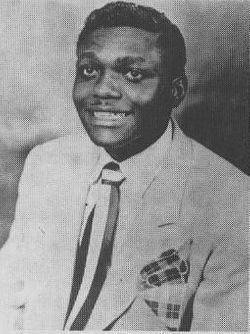 |
| Jackie Breston |
=================================
Rock & Roll Stylistic Finger Prints:
- Instrumentation includes – male vocals, backing vocals, electric guitars, double bass, drums, piano, harmonica, saxophone and other brass
- Fast Tempo – 140bpm or faster Energetic delivery of vocals (screaming and shouting)
- Often based on 12-bar chord structure
- Predominantly uses major keys but with blues scale for vocals, lead parts and solos
- Strong back beat on beats 2 and 4
- Often uses a shuffle rhythm – slightly swung quavers
- Walking bass line, four to a bar, often based on ascending and descending patterns of root-3rd-5th-6th-flat 7th-6th-5th-3rd
- Quite often this line is doubled by electric guitar Second guitar plays rhythmic patterns of chords – use of 6th and 7th extensions of chords
- Use of “stop time” where instruments play only on beat 1 then leave space for vocals or instruments
- Use of flamboyant guitar solos
- Call and response – often between vocal and guitar
Music
- "Boogie in the Park" by Joe Hill Louis, recorded in July 1950 and released in August 1950,
- featured Louis as a one-man band performing "one of the loudest, most overdriven, and distorted guitar stomps ever recorded" while playing on a rudimentary drum kit at the same time. It was the only record released on Sam Phillips' early Phillips label before founding Sun Records.[82] Louis' electric guitar work is also considered a distant ancestor of heavy metal music.[83]
- "Hot Rod Race" recorded by Arkie Shibley and His Mountain Dew Boys in late 1950,
- another early example of "rockabilly", highlighted the role of fast cars in teen culture.[51]
- "Sixty Minute Man" by the Dominoes, recorded on December 30, 1950,
- was the first (and most sexually explicit) big R&B hit to cross over to the pop charts. The group featured the gospel-style lead vocals of Clyde McPhatter (though not on this song), and appeared at many of Alan Freed's early shows. McPhatter later became lead singer of the Drifters, and then a solo star.
- "Rocket 88" by Jackie Brenston and his Delta Cats
- (actually Ike Turner and the Kings of Rhythm) (1951), and
- Bill Haley and the Saddlemen (1951)
- Played with too much restraint compared to Breston and Ike
- "How Many More Years" recorded by Howlin' Wolf in May 1951.
- Robert Palmer has cited it as the first record to feature a distorted power chord, played by Willie Johnson on the electric guitar
- "Rock and Roll Blues" by Anita O'Day recorded on January 22, 1952.
- One of Anita O'Day's few compositions, she was one of the best jazz singers ever, and recorded this blues single on Mercury Records with her own orchestra.
- "Hound Dog" by Willie Mae "Big Mama" Thornton was recorded on August 13, 1952.
- A raucous R&B song recorded with Johnny Otis' band (uncredited for contractual reasons), it was written by white teenagers Jerry Leiber and Mike Stoller, covered three years later by Freddie Bell and the Bellboys (Teen Records 101), and then more famously by Elvis Presley.
- "Crazy Man, Crazy", (1953) Bill Haley and his Comets,
- first rock and roll record on Billboard magazine chart.
- Not a cover, but an original.
- Haley said he heard the phrase at high-school dances his band was playing.
- "Love My Baby" and "Mystery Train" were recorded by Junior Parker with his electric blues band, the Blue Flames in 1953,
- "contributing a pair of future rockabilly standards" that later would be covered by Hayden Thompson and Elvis Presley, respectively
- For Presley's version of "Mystery Train", Scotty Moore also borrowed the guitar riff from Parker's "Love My Baby",[87] played by Pat Hare
- "Gee" by the Crows was recorded on February 10, 1953.
- This was a big hit in 1954, and is credited by rock n' roll authority, Jay Warner, as being "the first rock n' roll hit by a rock and roll group"
- "Mess Around" by Ray Charles was recorded in May 1953,
- one of his earliest hits.
- some lyrics riffing off of the 1929 classic "Pinetop's Boogie Woogie".
- "Rock Around the Clock", (1954) by Bill Haley and his Comets,
- first number 1 rock and roll record It stayed in the Top 100 for a then-record 38 weeks.
- The song itself had first been recorded in late 1953 by Sonny Dae & His Knights, a novelty group whose recording had become a modest local hit at the time Haley recorded his version.
- "Shake, Rattle and Roll", (1954) by Big Joe Turner, Bill Haley and his Comets, and Elvis Presley.
- Haley's version was the first international hit rock and roll record, actually predating the success of "Rock Around the Clock" by several months, though it was recorded later.as sung by Big Joe Turner is ranked number 127 on the Rolling Stone magazine's list of The 500 Greatest Songs of All Time.
- James Cotton's "Cotton Crop Blues" and Pat Hare's "I'm Gonna Murder My Baby" (both recorded in May 1954),
- were electric blues records which feature heavily distorted, power chord-driven electric guitar solos by Pat Hare
- Anticipate elements of heavy metal music.
- heavily distorted guitar sound by Hare that resembles the "distorted tones favoured by modern rock players.
- "That's All Right (Mama)", (1954) by Elvis Presley;
- this cover of Arthur Crudup's tune was Elvis' first single,
- is possibly the song most often cited (albeit inaccurately) as the first rock and roll record.
- "Sh-boom" (1954) by the Chords and the Crewcuts, in this case, the latter was a pale imitation.
- On most informed lists of rock & roll villains, the Crew Cuts would have to rank near the top. They weren't rock & rollers in the first place: their clean-cut white harmony glee club approach was really in the style of early and mid-'50s groups such as the Four Aces, the Four Lads, and the Four Freshmen.
- The Canadian quartet differed from those acts, however, in their concentration upon covers of songs originally recorded by R&B/doo wop vocal groups.
- considered a pioneer of the doo-wop variant.
- "Maybellene", (1955) by Chuck Berry
- adapted in part from the Western swing fiddle tune "Ida Red".
- recorded by Bob Wills and his Texas Playboys in 1938
- The record was an early instance of the complete rock and roll package:
-
youthful subject matter;
-
a small, guitar-driven combo;
-
clear diction; and
-
an atmosphere of unrelenting excitement.
"Rocket 88" is cited for its forceful backbeat and unrefined, distorted electric guitar. By contrast, writer and musician Michael Campbell wrote that, "from our perspective," it was not the first rock and roll record because it had a shuffle beat rather than the rock rhythm originally characteristic in Chuck Berry's and Little Richard's songs, although he added that "Rocket 88" had basic characteristics of rock music such as the emphasis on guitar and distortion.
The First Rock & Roll Song
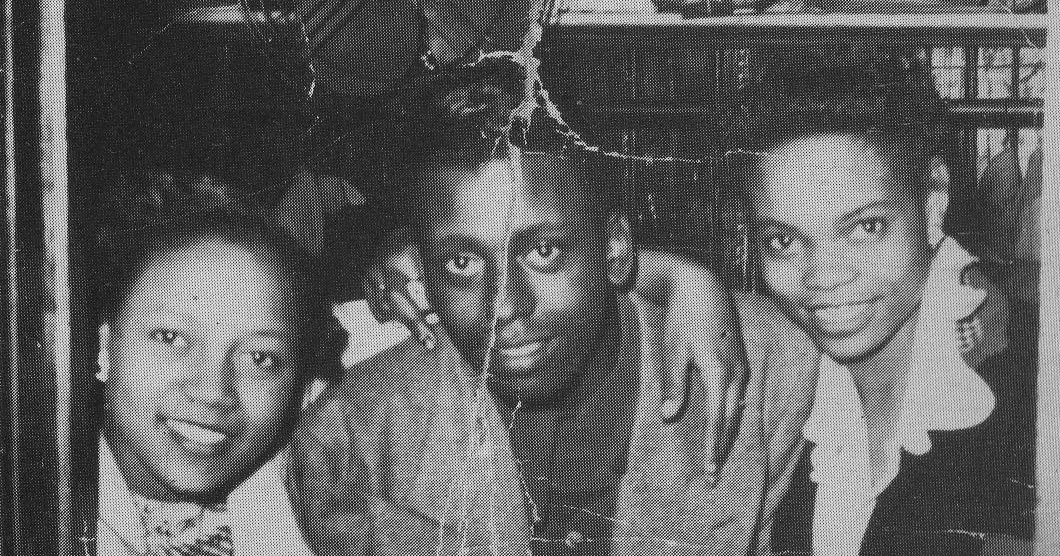
The word “GENRE” is often used to describe particular “musics”. Although we throw the terms like blues, jazz, classical around freely, what do they actually mean?
- Are they always accurate terms?
- What about the form or style of a song?
- Can they be defined purely within a musical context?
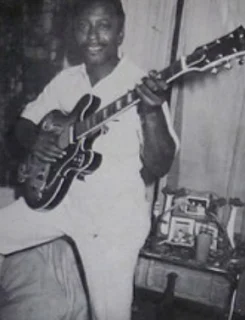 |
| Goree Carter |
In S1E2 we looked at song form and its effects on modernization of popular music. More importantly, what we discovered is How does song form relate to the story of Rock & Roll?
Rock & Roll is, as we are finding, is a blend of North American musics which were already present within the structure of society, the economy and history of the people. When Jazz, Blues, and Hillbilly music collide with popular mainstream musics of Tin Pan Alley, we get Rock & Roll. But is Rock & Roll a genre all by itself?
Let’s take a look at "Choo Choo Ch'Boogie" which today is now seen as epitomizing the style known as jump blues. Ironically, it was written by white songwriters whose background was steeped in country and western music. So was this a limitation to its ability to transcend musical genres or was it just not that “great” a piece of music?
“House of Blue lights" - Merril Moore
“House of Blue lights" - Ella Mae Morse
“House of Blue lights” - Chuck Berry
“House of Blue lights” - Crowbar
“House of Blue lights” - Asleep at the wheel
“House of Blue lights" The song recorded as a Big Band Swing number originally, yet it was later recorded by Chuck Berry, Jerry Lee Lewis, Canned Heat, Commander Cody & His Lost Planet Airmen, The Flamin' Groovies, Meat Puppets(on a hard to locate compilation (“Fast Track to Nowhere: Songs from Rebel Highway”), George Thorogood.
This begs the question just what use is “Genre” as a classification if one song can successfully be recorded by such a wide range of musicians or written by songwriters who are unskilled in another type of music.
Classification of music is just as important as it is unimportant in the general scheme of consumption.
Classification of music by “genre” is a business invention, purely marketing, a sales pitch used to make the consumer feel comfortable making a purchase.
There in lies the problem with trying to pin a date, place and time to the creation of Rock & Roll, and more specifically, the first song.
Business soils the whole process by creating artificial categories and genres of music what might otherwise be similar if not identical. For example, some “Race Records” are indistinguishable from ”Hillbilly" music because they share much of the same history, social and cultural backgrounds in certain parts of North America.
The music industry took to the task of making music “genres” divisive believing it would help segment the market into chucks if you will, that could be marketed using minimal resources where they saw fit.
Unwittingly the music business were enforcing a top down approach to a bottom up problem. What does this mean exactly? Consider the following, how do you empower a sense of control of the product you are selling? Setting up artificial boundaries are equatable to genres and their affect on music distribution.
If you can create a set of artificial constraints around a particular product you can manipulate its consumption. Without knowing it, record companies stumbled upon a 3 part system ideally suited for the task.
Cultures, traditions, history, economics and musics begin to criss cross each other, hence three essential components wind up playing a role in music consumption:
- An individual component: a belief
- A social component: the belief is shared by other members of a social unit
- A deontic: a conduct is obliged
Their job or result is an artificial society
In later episodes we’ll inspect “Genre” as a whole and the damage classification caused society.
Jump blues is a loud, rowdy simplified blues influenced form of jazz that became popular in the 40s after the hard times of the 30s drove many big bands out of business.
Patrons of noisy dance halls and clubs needed small groups that could match the volume of the departed big dance bands to fuel their entertainment. To keep the attention of their patrons in the crowded rooms, the singers would shout and the saxophonists would honk and growl giving the performers' names like 'shouters and honkers'. Jump Blues' hard rhythmic drive and snare beat emphasis on the 2 and 4 has given the genre credit for being the forebear of rock-n-roll and R&B.
The style of hard R&B that came to be known as "jump blues" had its origin in the economic belt-tightening that came during World War II. Swing bands, forced to downsize to a rhythm section and one or two soloists, began to compensate for their smaller scale by playing harder, faster, wilder versions of the swing jazz they'd become known for, and also incorporating the blues that was just starting to make inroads into urban areas (thanks to the migration of rural blacks from the South up into big cities like Chicago and Memphis). The result was the first example of "rhythm and blues," and also one of the main stylistic influences on what would later become known as "rock and roll."
The typical jump blues song had a simpler beat than most swing jazz, usually with guitar relegated to rhythm and solos provided by a saxophone.
In deference to the wilder music, "jump blues" lyrics were often more salacious than their other "R&B" counterparts, often featuring outrageous and even campy vocals to match. Although it originally began as an offshoot of the "boogie-woogie" craze, jump blues was less concerned with swinging the beat than hitting it hard. As a result, country and "country boogie" musicians latched onto the style, eventually creating rockabilly, while black artists cleaned the words up somewhat and brought an even harder version into rock: both Chuck Berry's "Maybelline" and Little Richard's "Tutti Frutti" are excellent examples of jump.
Several jump blues hits became Rock & Roll standards as well, including "The Train Kept A-Rollin'," "Shake, Rattle, And Roll," and "Good Rockin' Tonight." As R&B slowed down and got funkier in the early Sixties, jump blues faded from existence; however, many blues bands, especially those with horn sections, continue to record in the style.
Music 1940 -1950
· Rock, Daniel – Lucky Millinder and his Orchestra with Rosetta Tharpe (June 1941)
· Daniel Rock was an English Roman Catholic priest
· Be-Babba Leba – Helen Humes (August 1945)
· Basically the Bill Doggett Octet is her backing band
· My Gals A Jockey – Big Joe Turner (January 1946)
· Bill Moore's Lucky Seven Band*
· Choo Choo Ch”Boogie – Louis Jordan (July 1946)
o Choo Choo Ch'Boogie" is a popular song written by Vaughn Horton, Denver Darling, and Milt Gabler. The song was recorded in January 1946 and released by Decca Records.
o It topped the R&B charts for 18 weeks from August 1946, a record only equalled by one other hit, "The Honeydripper."
o The record was one of Jordan's biggest ever hits with both black and white audiences, peaking at number seven on the national chart and provided an important link between blues and country music, foreshadowing the development of "rock and roll" a few years later.
o Alternating up and down strokes of the F and F6 chords on the guitar creates a relaxed shuffle beat feel. The song is essentially a three-chord, twelve bar blues.
o Although "Choo Choo Ch'Boogie" is now seen as epitomizing the style known as jump blues, it was written by white songwriters whose background was in country and western music.
· The House of Blue lights – Ella Me Morse with Freddie Slack and his Orchestra (February 1946)
o popular song published in 1946, written by Don Raye and Freddie Slack. It was first recorded by Ella Mae Morse, and was covered the same year by The Andrews Sisters.
o reached # 8 on the Billboard pop chart, and the version by The Andrews Sisters reached # 15
o Little Richard made reference to the "house of blue lights" in his 1958 hit "Good Golly, Miss Molly".
o The song itself was later recorded by Chuck Berry, Jerry Lee Lewis, Canned Heat, Commander Cody & His Lost Planet Airmen, The Flamin' Groovies, Meat Puppets, George Thorogood and others
· Gotta Gimme Whatcha Got – Julia Lee and her Boyfriends (September 1946)
o dirty blues musician
o she became best known for her trademark double entendre songs,
· "Freight Train Boogie" by the Delmore Brothers,
o very light on the rocking,
o but a popular hit with lyrics from African American folk tale,
o like Bo Diddley, but without the beat
o featuring harmonica player Wayne Raney,
o heavily influenced by the blues,
o first recorded in 1931.
· "Straighten Up and Fly Right" by Nat King Cole (1946),
· "Let the Good Times Roll" by Louis Jordan (1946)
o twelve-bar blues, the song became a blues standard\
o Done by Ray Charles
o Jordan and the Tympany Five performed the song in the 1947 film Reet, Petite, and Gone, although the studio recording rather than a live performance is used in the soundtrack.
· "Oakie Boogie"; by Jack Guthrie (1947)
o Woody’s cousin
o Studio musicians
· "Move It on Over" by Hank Williams was recorded on April 21, 1947.
o It was Williams' first hit on the country music charts, reaching no. 4.
o It used a similar melody to Jim Jackson's 1927 "Kansas City Blues"
o was adapted several years later for "Rock Around the Clock".
· He”s A Real Gone guy – Nellie Lutcher (July 1947)
o Sides A&B recorded in Los Angeles, CA April 30, 1947
o Recorded in 1998 by Bill Wyman of the Rolling Stones from 1962 until 1993.
· "Good Rocking Tonight", in separate versions by Roy Brown (1947) and Wynonie Harris (1948),
o Led to a craze for blues with "rocking" in the title.
o Brown's original version is jump blues while Harris's version is definitely more modern rock and roll.
o Later heartily covered by Elvis Presley and less heartily by Pat Boone.
· "Rock and Roll" by Wild Bill Moore was recorded in 1948 and released in 1949.
o This was a rocking boogie where Moore repeats throughout the song "We're going to rock and roll, we're going to roll and rock" and ends the song with the line "Look out mamma, going to do the rock and roll."
o Related were "Rock and Roll Blues" by Erline 'Rock and Roll' Harris, a female singer, with the lyrics "I'll turn out the lights, we'll rock and roll all night" and "Hole in the Wall" by Albennie Jones, co-written and produced by Milt Gabler, with the lyrics "We're gonna rock and roll at the hole in the wall tonight".
· "It's Too Soon to Know", written by Deborah Chessler and performed by The Orioles, November 1948
o is considered by some to be the first "rock and roll" song.
o Pat Boone performed the same song for white audiences.
· "Boogie Chillen'" (or "Boogie Chillun") is a blues song written by John Lee Hooker and recorded in 1948.
o It was Hooker's debut record release and became a No. 1 Billboard R&B chart hit in 1949.
o The guitar figure from "Boogie Chillen'" has been called "the riff that launched a million songs"
o It is considered one of the blues recordings most influential on the forthcoming rock 'n' roll.
· "Drinkin' Wine Spo-Dee-O-Dee"; by Stick McGhee and his Buddies (1949)
o jump blues guitarist
o cover by Wynonie Harris, followed by a hillbilly-bop version by Loy Gordon & His Pleasant Valley Boys.
o cover versions by various artists, Johnny Burnette in 1957, and Jerry Lee Lewis in 1959
· "Ragg Mopp" by Johnny Lee Wills and Deacon Anderson (1949),
o strange little novelty tune,
o the lyrics are simply the title spelled out or yelled out, re-released in 1954 by the Ames Brothers.
o The song, a 12-bar blues, was written by Tulsa Western Swing bandleader Johnnie Lee Wills
· "The Fat Man" by Fats Domino (recorded on December 10, 1949),
o featuring Fats on wah-wah mouth trumpet,
o the first of his 35 Top 40 hits.
o Sadly, the aluminum (or lacquer) master disc recording has been missing for over 50 years.
o The tune is a variation on the traditional New Orleans tune "Junker Blues",
o which also provided the melody for Lloyd Price's "Lawdy Miss Clawdy," and Professor Longhair's "Tipitina".
· Rock the Joint –Jimmy Preston & His Prestonians (May 1949)
o cited as a contender for being "the first rock and roll record"
o During the rise of Pshycobilly star the rev Horton Heat, it formed the centrepiece of “Its Martini Time”
· "Rock Awhile" by Goree Carter was recorded in April 1949.
o It has been cited as a contender for the "first rock and roll record" title and a "much more appropriate candidate" than the more frequently cited "Rocket 88" (1951).
o Carter's over-driven electric guitar style was similar to that of Chuck Berry from 1955 onward.
Within the 1940s, the appearance of musical styles resembling Rock & Roll are becoming apparent. The bands are getting smaller as the big band era falls into decline sharply during the WWII era due economic constraints of touring with large bands, while the response came in the form of louder more ruckus entertainment powered by microphones and amplifiers.
Amplification brought with it the ability to replace large orchestras and bands with fewer instruments, which could fulfil the purpose of filling a space with sound.
The guitar in particular, turned out to be an earlier turning point in defining this new rocking music, as it could be as loud as a piano, and infinity more portable. The sheer fact that you were no longer at the mercy of an instrument provided to you helped make consistency a perfect factor for dissemination the new music.
In attempts to adopt the technology which made the guitar appealing, its volume capability, its technological limits were being discover, and subsequently became identifiable aspects of Rock & Roll.
Nick Tosches says it best | ”It is impossible to discern the first modern rock record, just as it is impossible to discern where blue becomes indigo in the spectrum."
So why so many think that Jackie Brenston made the first rock ‘n’ roll record? Well for a start, Sam Phillips was fond of telling people that it was.
Bringing you into the folds of the shows purpose, is to better understand where modern forms of popular music are evolving from and how their history has become entrenched in our modern music belief systems.
That’s not to say that we won’t dig through the bins and listen to some fabulous examples of bad music, or listen to the same song done by 20 different bands or look at why there are more than 500 songs that talk about chicken.
------------
Today we are calling bullshit on the origin of the first Rock & Roll song myth, or are we? Was it really just a fuzzy guitar sound hit upon by accident that made Rocket 88 the first Rock & Roll song? Or was it an evolution of events, people, styles, cultures and languages colliding. People have opinions, and there a more than a few regarding the first Rock & Roll song.
------------------
Arguably Canada and the United States were the perfect musical laboratory:
- take people from every corner of the globe,
- give them freedom to create.
- by sheet music,
- phonograph,
- radio
- CD,
- mp3,
- Or through services like Spotify and iTunes.
Then Distribute their effort by:
There exists a purely North American set of popular “musics.” Blues, Jazz, Country and Rock & Roll.
Until the mid 1800s, American popular music was for the most part entirely European in distinctive features. The English culture, language, society and commercial interests meant that their music established early on a kind of “mainstream” around which other styles orbited. Notwithstanding, Irish, Scottish, and Italian songs also influenced mid 19th C American popular music.
During this period, If the music wasn’t based upon a purely formal European tradition, such as hymns, traditional folk songs or established Operatic scores, the music was usually was born out of urban experience and concerned with current events.
Ballads could be heard for the first time, usually by “Ballladmongers” who sung the compositions as they were hawking their collection of broadsides. Typically the words were printed on a large sheet, without musical notation, so it was important for the buyer to hear it sung or as in many cases the songs were set to already familiar melodies.
So why is this important? First and foremost it exemplifies the divisions which were growing apparent within society, especially after the American Civil War. Populations began to shift. Industrialization would begin driving rural white and African Americans to urban settings in search of work and a better life. This migration is where rock & roll really gets its start. We then add in The folk and popular styles brought by immigrants from other parts of Europe during subsequent waves of immigration from every continent. Just for perspective, between 1880 and 1910 an additional 17 million immigrants entered the United States.
Not all immigrants came willingly however. Between one and two million Africans were forcibly brought to the United States between the 17th and 19th centuries.
The genesis of African-American music in the United States involved two closely related processes.
The first of these was syncretism, as my first year Psych prof used to say after every he used some fancy new term . . . “What was that?”
Syncretism, the selective blending of
- traditions,
- music,
- religion
- and language,
in this case derived from Africa and Europe.
The second was the creation of institutions that became important centers of black musical life
- the family,
- the church,
- the voluntary association,
- the school, and so on.
Is it misleading to speak of “black music” as a homogeneous entity or thing. African-American culture took different forms in Brazil, Cuba, Haiti, Jamaica, and the United States, shaped in each by the particular mix of African and European source
As in the United States, musicians in Latin America developed a wide range of styles also blending African music with the traditions of Europe. Caribbean, South American, and Mexican traditions have long influenced popular music in the United States. With migration facilitated to America by the presence of of vast shipping needs of the industrialized societies, access to new lifestyles customs, traditions, heritage, habits, would emerge to offer another angle in this inevitable collision.
Is Rock & Roll just a term, a series of words, a popular phrase? The origins of the expression we use to describe Rock & Roll dates back to the 16th C. The phrase "rocking and rolling" may have originally described the movement of a ship on water, but by the early 1900s, its meaning had changed to encompass and describe both a spiritual fervor and as a sexual analogy.
- The Camp Meeting Jubilee - 1896, Unknown Artist, Cylinder recording
"Rocking" was used to describe the spiritual rapture felt by worshippers at certain religious events, while it also came to refer to the rhythm often found in the accompanying music.
Eventually by 1896 the words began to appear in recordings, most notable are the versions of the song “The Camp Meeting Jubilee” sung by both the Edison male and Columbia Quartettes.
The classic examples ”They had a roll in the hay" or "I rolled her in the clover" which date back hundreds of years. Rock “n” roll was little more than a euphemism among the Black population in early 20th Century America.
“My Daddy Rocks Me (with one steady roll); as clear evidence as you can get for the link between rock and roll, and sex.
Music 1920-1930
- Trixie Smith along with the Jazz Masters - “My Daddy Rocks Me (with one steady roll); September 1922 in New York City
- the first record to refer to "rocking" and "rolling" in a secular context
- Papa Charlie Jackson recorded "Shake That Thing" in 1925.
- "That Black Snake Moan", a country blues first recorded in 1926 by Blind Lemon Jefferson,
- contains the lines "That's all right mama / That's all right for you / Mama, that's all right / Most any old way you do", later famously used by Arthur Crudup for his song "That's All Right",
- subsequently covered by Elvis Presley as his first single.
- Arthur Crudup for his song "That's All Right",
- "Honky Tonk Train Blues", by Meade "Lux" Lewis 1927
- foreshadowed "Pine Top's Boogie Woogie" a year later, perhaps not coincidentally since Lewis and Pine Top had recently been roommates.
- it contained most of the elements that would be called Rock and Roll thirty years later, except with piano instead of guitar.
- "Sail Away Ladies" and "Rock About My Saro Jane" were recorded by Uncle Dave Macon and his Fruit Jar Drinkers on May 7, 1927.
- "Sail Away Ladies" is a traditional square dance tune, with, in Macon's version, a vocal refrain of "Don't she rock, daddy-o", which in other versions became "Don't you rock me, daddy-o".
- "Don't You Rock Me, Daddy-o" later became a hit in the UK in 1957 for both the Vipers Skiffle Group and Lonnie Donegan. Macon is thought to have learned the song "Rock About My Saro Jane" from black stevedores at Nashville in the 1880s, although Alan Lomax believed that the song dated from the mid-19th century.
- "Jim Jackson's Kansas City Blues" by Jim Jackson, recorded on October 10, 1927,
- was a best selling blues, suggested as one of the first million-seller records.
- Its melody line was later re-used and developed by Charlie Patton in "Going to Move to Alabama" (1929) and Hank Williams ("Move It on Over") (1947) before emerging in "Rock Around the Clock", (1954)
- its lyrical content presaged Leiber and Stoller's "Kansas City".
- It contains the line "It takes a rocking chair to rock, a rubber ball to roll," which had previously been used in 1924 by Ma Rainey in "Jealous Hearted Blues",[50] and which Bill Haley would later incorporate into his 1952 recording "Sundown Boogie."
- Charlie Patton in "Going to Move to Alabama" (1929)
- Hank Williams ("Move It on Over") (1947)
- Bill “Haley and his Comets - Rock Around the Clock", (1954)
- Albert King - "Kansas City" (195x)
- "Pine Top's Boogie Woogie" by Clarence "Pinetop" Smith, recorded on December 29, 1928,
- was one of the first hit "boogie woogie" recordings, and the first to include classic rock and roll references to "the girl with the red dress on" being told to "not move a peg" until she could "shake that thing" and "mess around".
- Smith's tune derives from Jimmy Blythe's 1925 recording "Jimmy's Blues", and earlier records had been made in a similar style by Meade "Lux" Lewis and others.
- A hit "pop" version of Smith's record was released by Tommy Dorsey in 1938 as "Boogie Woogie".
- "Crazy About My Baby" by Blind Roosevelt Graves and brother, Uaroy, recorded in 1929, was a rhythmic country blues with small group accompaniment.
- Researcher Gayle Dean Wardlow in his book “Chasin' That Devil Music," has stated that this "could be considered the first rock 'n' roll recording".
- The Graves brothers, with an additional piano player, later were recorded as the Mississippi Jook Band, whose 1936 recordings including "Skippy Whippy", "Barbecue Bust" and "Hittin'the Bottle Stomp" were highly rhythmic instrumental recordings which, according to writer Robert Palmer, "..featured fully formed rock and roll guitar riffs and a stomping rock and roll beat"
During the 1920s and 1930s, composers and lyricists fused earlier song structures to produce a verse-refrain form which, in the hands of more inventive composers, allowed for all sorts of interesting variations.
While the verse came to be regarded as mere introduction, the refrain, the part that is usually considered “the song,” typically comprised four sections of equal length, in the pattern A B B A.
The promotional catchphrase “race music” was first applied by Ralph Peer (1892-1960), a Missouri-born talent scout for Okeh Records.
Although a clear distinction was drawn between race music and hillbilly music — each of which comprised dozens of specific styles — the two had a number of important features in common.
- Both bodies of music originated mainly in the American South and
- rooted in longstanding folk music traditions.
As they entered the mass marketplace, both blended these older rural musical styles with aspects of national popular culture, including the minstrel show, vaudeville, and other musical forms.
Race music and hillbilly music both grew out of the music industry”s efforts to develop alternative markets during a national decline in record sales and were disseminated across the country by new media — including electric recording, radio, and sound film — and by the process of urban migration, which affected the lives of millions of rural Americans during the 1920s and 1930s. And both bodies of music provided the basis for forms of popular music that emerged after World War II (rhythm & blues, country and western, and rock ”n” roll ), extending their appeal across regional and, in the end, international boundaries.
Jazz”s attraction as a symbol of sensuality, freedom, and fun does appear to have transcended the boundaries of region, ethnicity, and class, creating a precedent for phenomena such as the swing era, rhythm & blues, and rock ”n” roll.
“Hillbilly music,” later rechristened “country and western music” or simply “country music,” developed mainly out of the folk songs, ballads, and dance music of immigrants from the British Isles.
The first generation of hillbilly recording artists was also familiar with the sentimental songs of Tin Pan Alley, and this material became an important part of the country music repertoire, alongside the older Anglo-American ballads and square dance tunes.
Recordings of the late 1940s and early 1950s included swing-influenced “jump bands,” Tin Pan Alley-style love songs performed by crooners, various styles of urban blues, and gospel-influenced vocal harmony groups. The reappearance of small independent record labels provided an outlet for performers who were ignored by major record companies.
These jump bands specialized in hard-swinging, boogie-woogie based party music, spiced with humorous lyrics and wild stage performances.


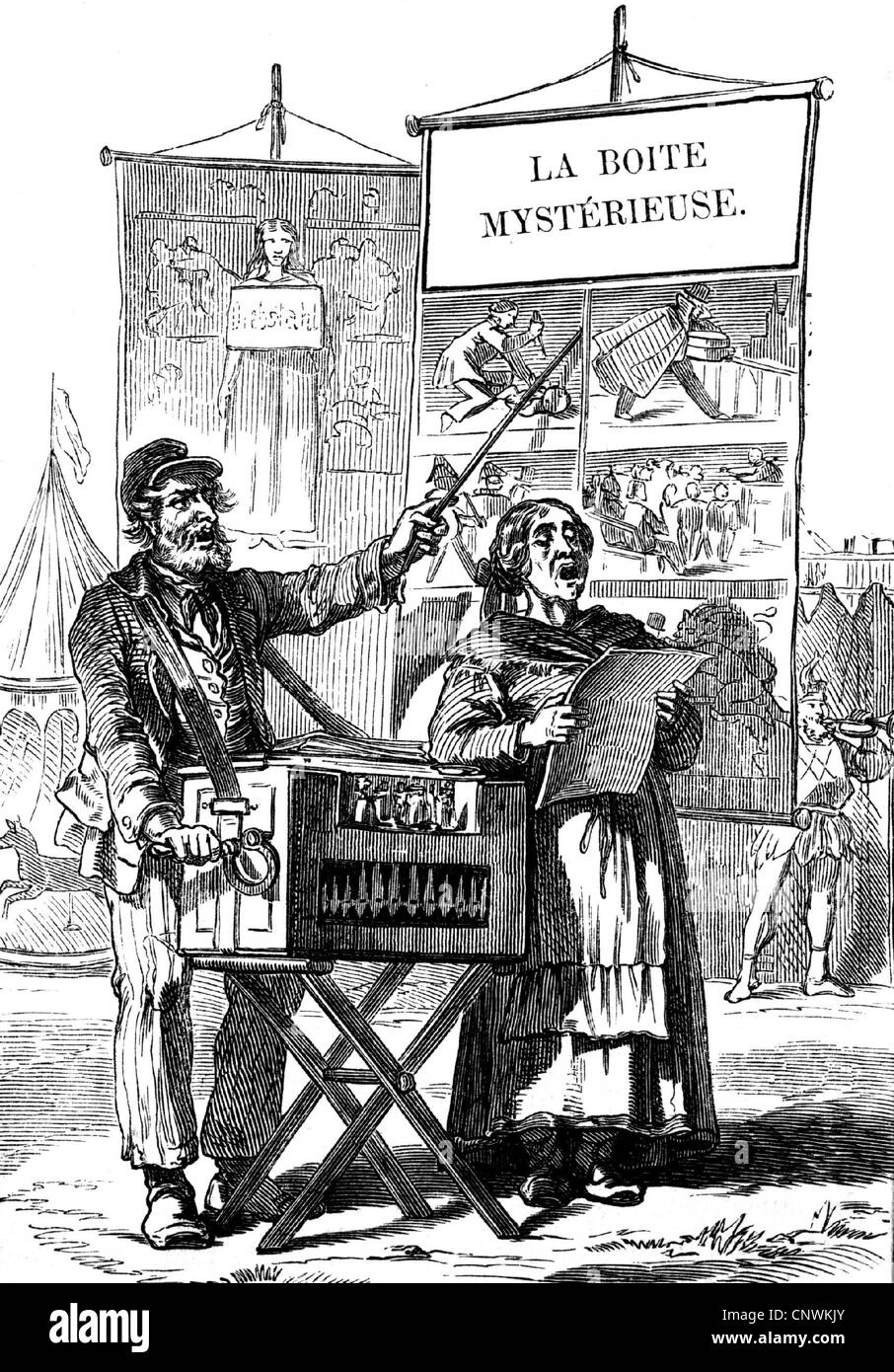
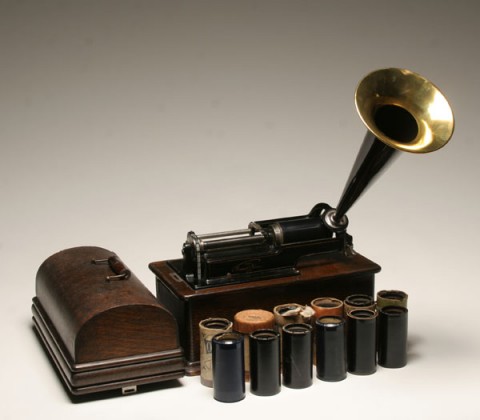
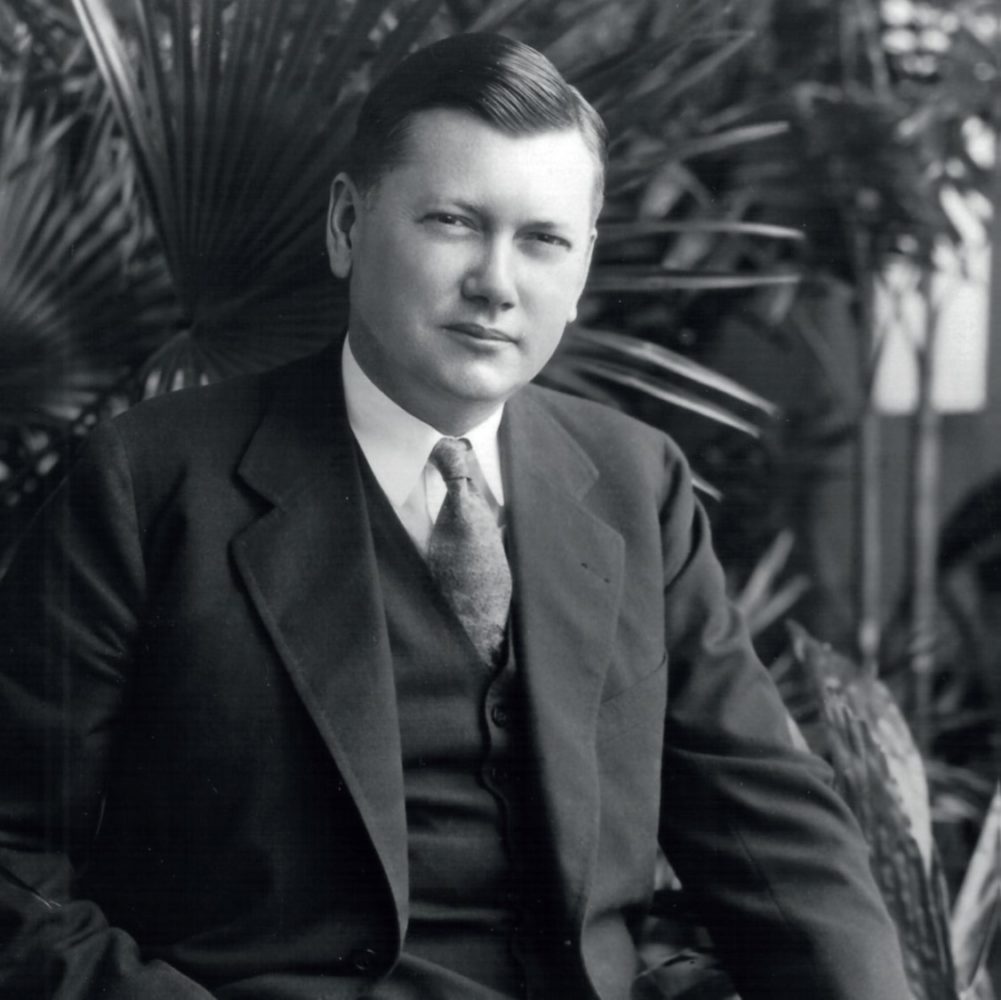





Social Media
Search Here